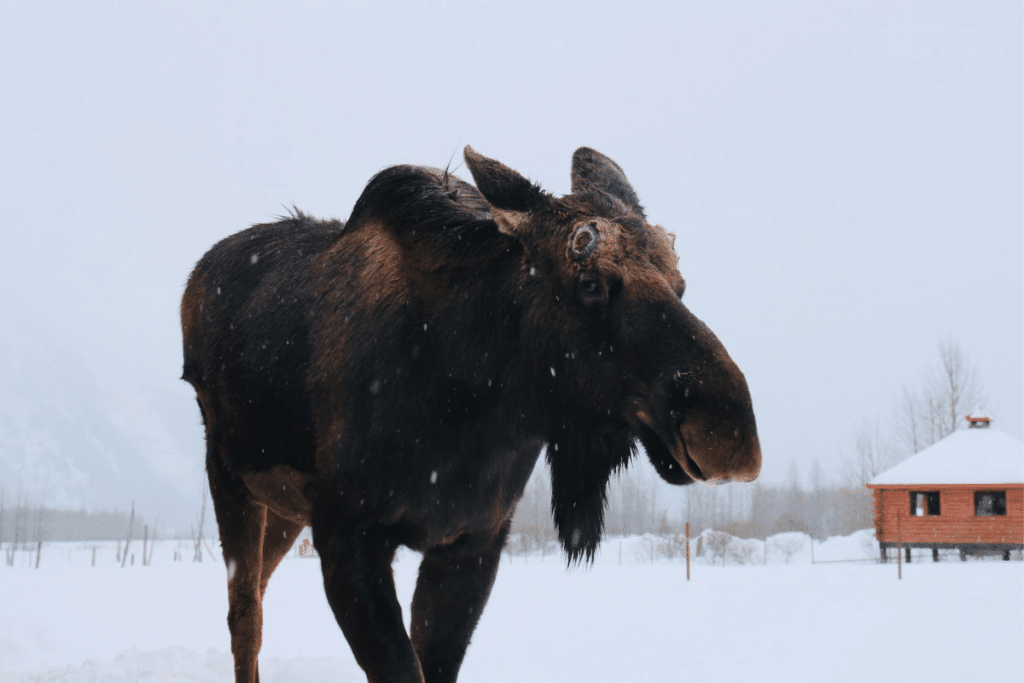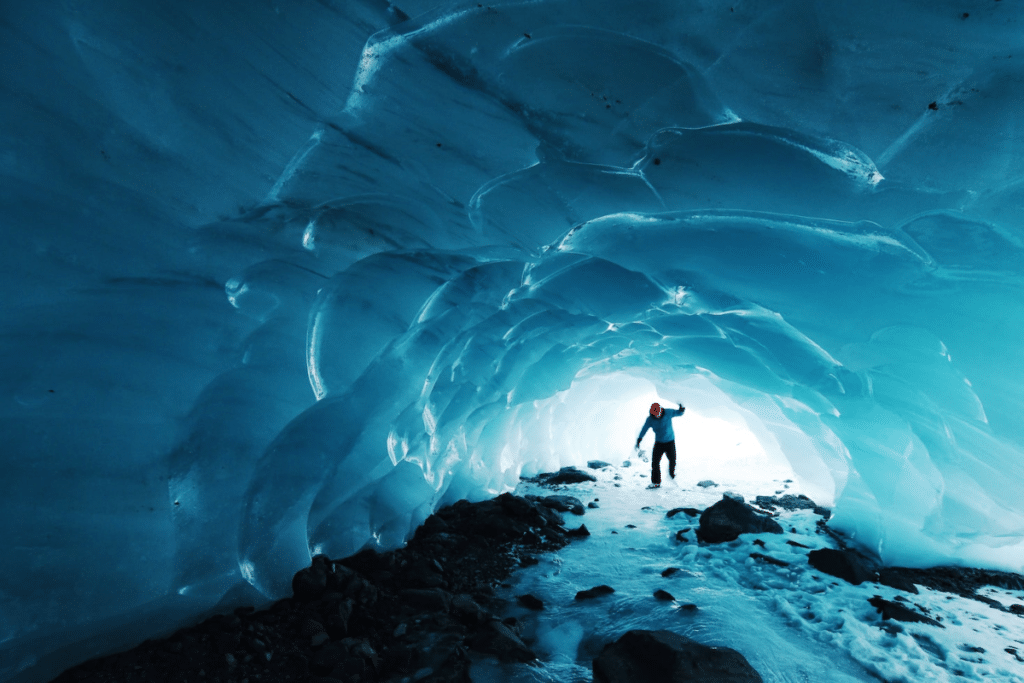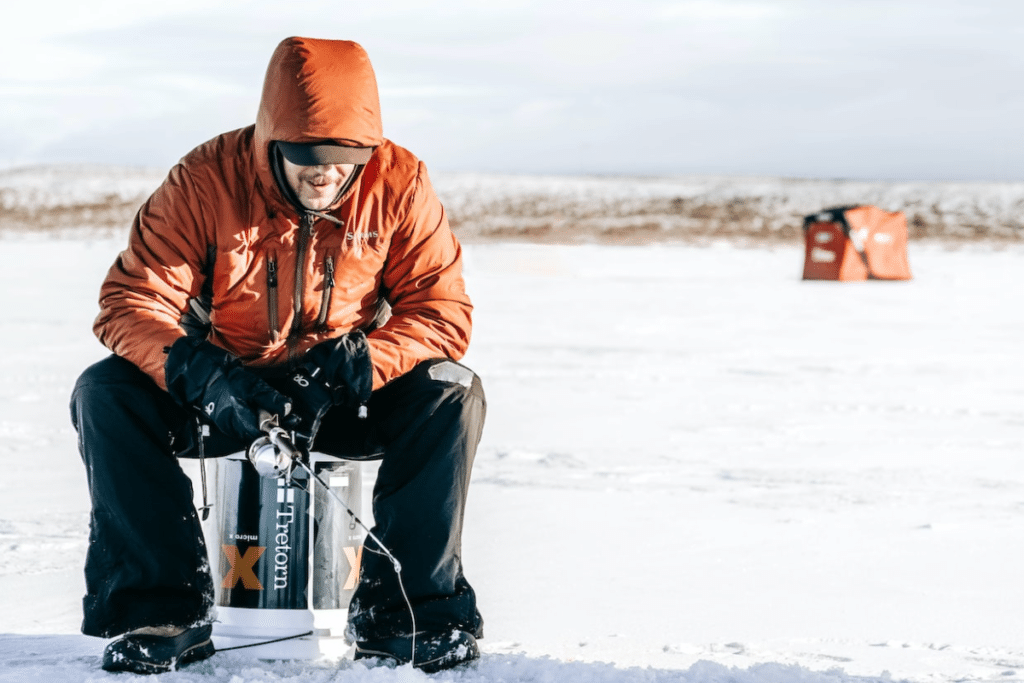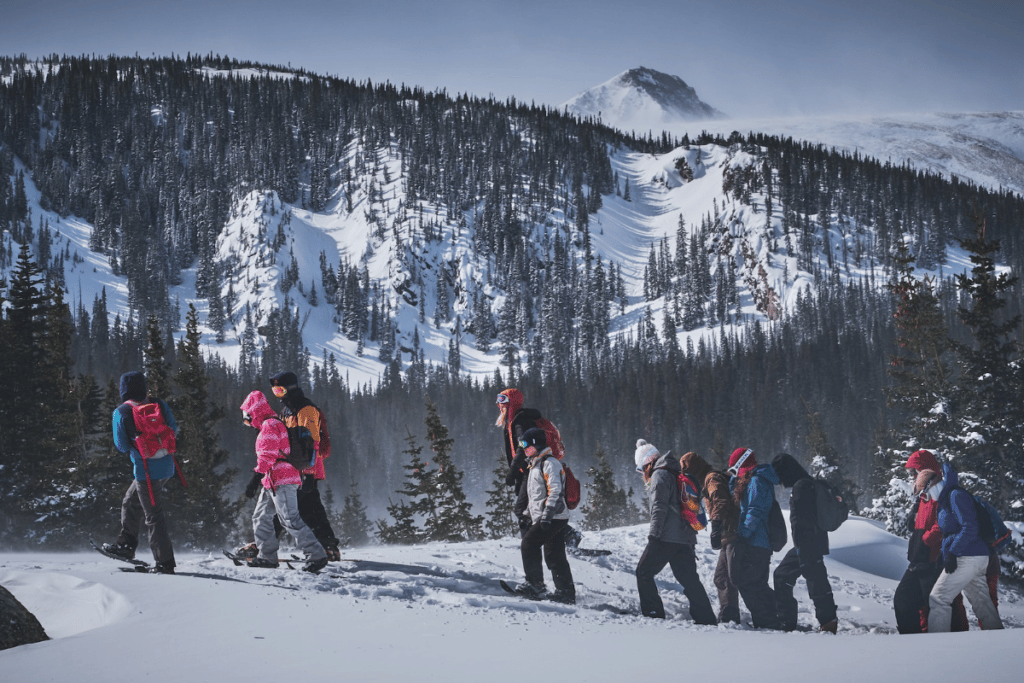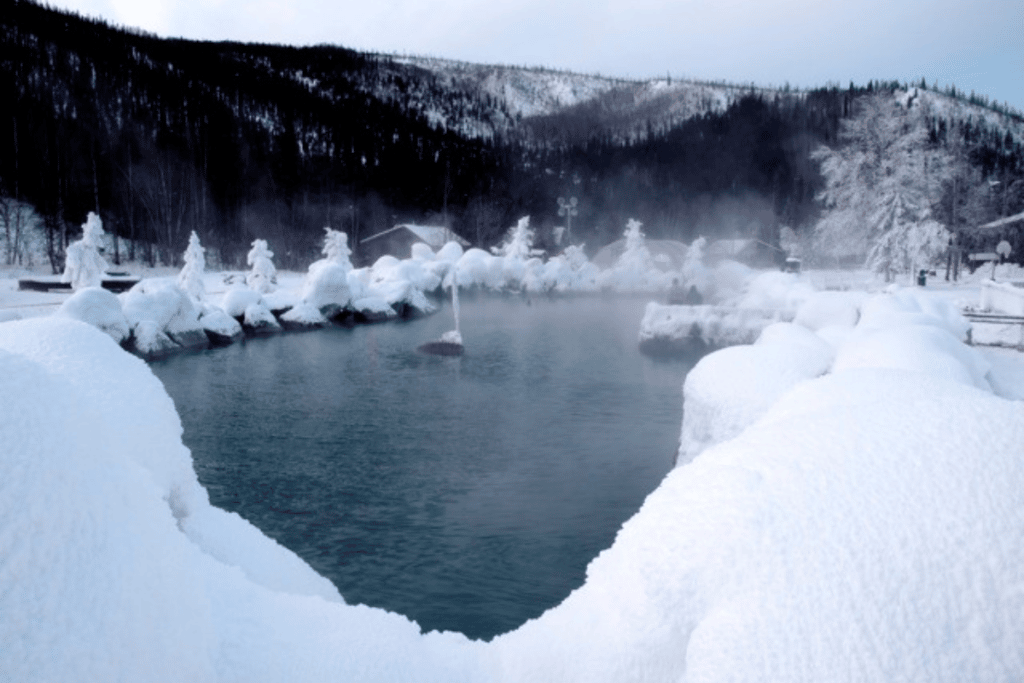Many people don’t realize how much fun there is to be had in the Last Frontier during the winter months. There are many things to do in Alaska in January, depending on your interests and the weather.
You may have already experienced Alaska in the summer or early fall months, but what about coming in the winter?
From skiing to aurora borealis viewing, Alaska offers many things to do in the winter, including January.
Go Skiing or Snowboarding
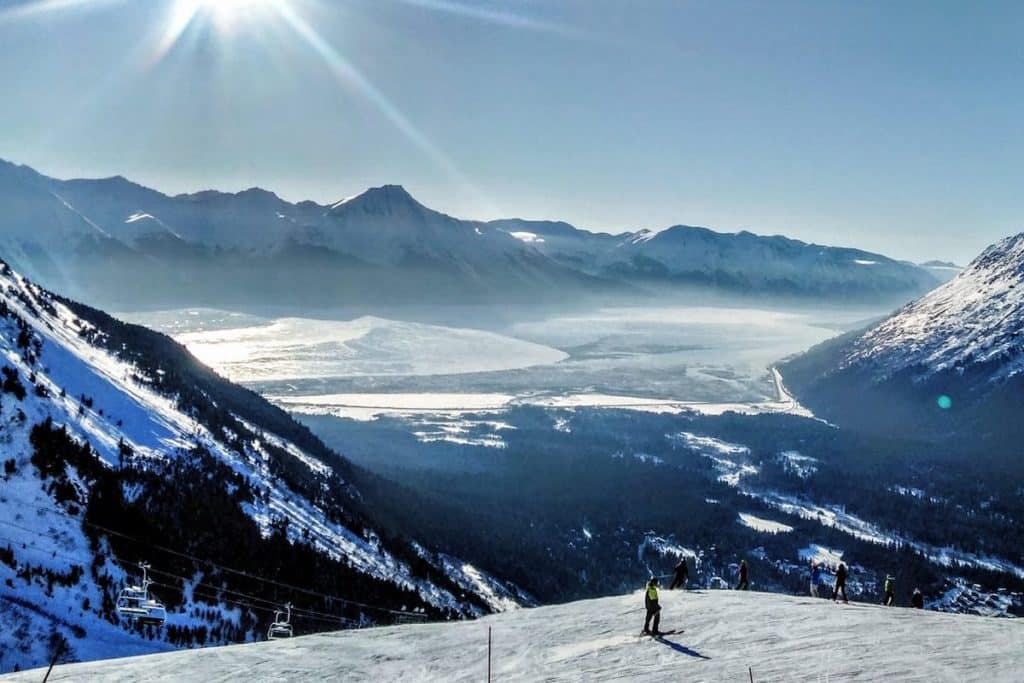
Alaska is a great place to go skiing or snowboarding, with its abundant snowfall and stunning mountain ranges. Ski resorts in Alaska offer a variety of terrain for skiers and snowboarders of all abilities, from groomed runs to backcountry bowls.
There are several ski resorts in Alaska to choose from, including:
- Alyeska Resort: Located in Girdwood, about 40 miles from Anchorage, Alyeska Resort is the largest ski resort in Alaska. It has over 1,400 acres of skiable terrain and a 2,500-foot vertical drop, making it a popular destination for both skiers and snowboarders.
- Hilltop Ski Area: Located in Anchorage, Hilltop Ski Area is a smaller ski resort with a 1,000-foot vertical drop. It is a great place for beginner skiers and snowboarders, as well as those looking for a more laid-back skiing experience.
- Eaglecrest Ski Area: Located in Juneau, Eaglecrest Ski Area is a community-owned ski resort with over 1,600 acres of skiable terrain. It has a mix of groomed runs and backcountry bowls, making it a good destination for skiers and snowboarders of all abilities.
When planning a ski trip to Alaska, it is important to be prepared for the cold and unpredictable weather. Make sure to bring warm, waterproof clothing, as well as any necessary ski or snowboard equipment.
It is also a good idea to check the weather forecast and avalanche conditions before hitting the slopes.
Alyeska Resort
- Address: 1000 Arlberg Ave Girdwood AK 99587
- Phone: (800) 880-3880
- Email: [email protected]
- Website: alyeskaresort.com
- Social Media: Facebook | Instagram | TripAdvisor
Hilltop Ski Area
- Address: 7015 Abbott Rd Anchorage AK 99507
- Phone: (907) 346-1446
- Website: hilltopskiarea.org
- Social Media: Facebook | Instagram | Twitter | YouTube
Eaglecrest Ski Area
- Address: 3000 Fish Creek Rd Juneau AK 99801
- Phone: (907) 790-2000
- Email: [email protected]
- Website: skieaglecrest.com
- Social Media: Facebook | Instagram | YouTube
Try Dog Sledding
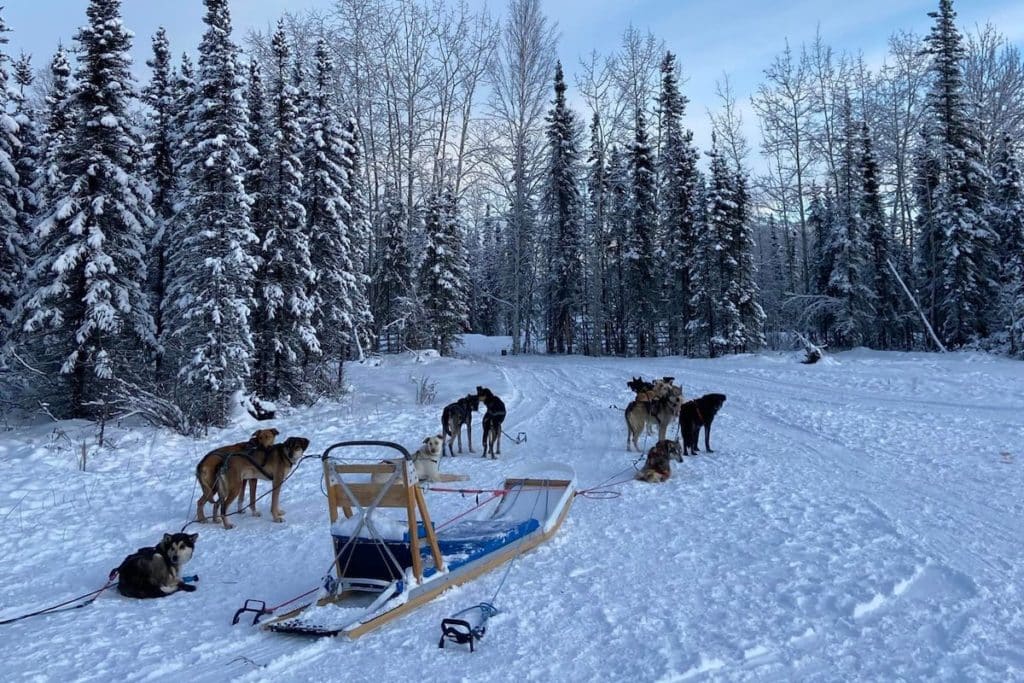
Alaska is known for its sled dog culture, and you can experience this firsthand by going on a dog sledding tour.
Dog sledding in Alaska during the winter can be a fun and exciting experience. It is a traditional method of transportation in the state, especially in the rural areas where there are few roads.
During the winter months, the snow and cold temperatures make it an ideal time for dog sledding.
There are several companies that offer guided dog sledding tours in Alaska. These tours usually take place in the interior of the state, where there is plenty of snow and relatively mild temperatures. The tours can range from half-day excursions to multi-day adventures, and may include stops at remote lodges or cabins along the way.
During the tour, you will ride in a sled pulled by a team of Alaskan huskies or other sled dogs. The sled is driven by a musher, who will teach you about the history and traditions of dog sledding in Alaska. You may also have the opportunity to help care for the dogs and learn how to drive the sled yourself.
It is important to dress warmly for a dog sledding tour in Alaska, as the temperatures can be very cold, especially in January. Waterproof and insulated clothing, warm boots, a hat and gloves are all essential. It is also a good idea to bring along some snacks and water, as the tours can be physically demanding.
Dog sledding in Alaska can be a unique and thrilling adventure. It is a great way to experience the beauty and ruggedness of the state, and to learn about the rich history and culture of the region.
Cotters Sled Dog Rides and Tours
- Address: 320 Glacier Ave Unit 3 Fairbanks AK 99701
- Phone: (907) 888-0365
- Email: [email protected]
- Website: billcotterkennel.com
- Social Media: Facebook | TripAdvisor
Check Out Wildlife Viewing Areas
Alaska is known for its abundance of wildlife, and January is a great time to see many species in their natural habitat. From whales and seals in the water to moose and caribou on land, there are plenty of opportunities to observe and photograph the state’s diverse array of animals.
One of the best ways to see whales and seals is by taking a whale watching tour or venturing out onto the coast. Many species can be seen from shore, including humpback whales, killer whales, and harbor seals. In addition, birdwatchers can spot a variety of species, such as ptarmigans, grosbeaks, and snow buntings, which are common in Alaska during the winter months.
For a closer look at wildlife, consider visiting a wildlife refuge or conservation area, such as the Alaska Wildlife Conservation Center or the Kenai National Wildlife Refuge. These protected areas are home to a wide range of species, including bears, moose, caribou, and wolves.
Guided tours, such as dog sledding or snowshoeing excursions, are another way to experience Alaska’s winter wildlife. These tours take you into the heart of the state’s wilderness, where you can see animals in their natural habitat and learn about their behavior and habits from experienced guides.
No matter how you choose to view wildlife in Alaska, it’s important to remember to respect the animals and give them plenty of space. Many species can be unpredictable and may behave aggressively if they feel threatened, so it’s best to observe them from a distance and avoid approaching them.
Dressing warm and being prepared for colder temperatures and potentially harsh weather conditions is also crucial. Alaska’s winter can be harsh, but the chance to see the state’s incredible wildlife makes it all worth it.
Alaska Wildlife Conservation Center
- Address: Mile 79 Seward Hwy Girdwood AK 99587
- Phone: (907) 783-0058
- Email: [email protected]
- Website: alaskawildlife.org
- Social Media: Facebook | Instagram
Northern Lights Viewing
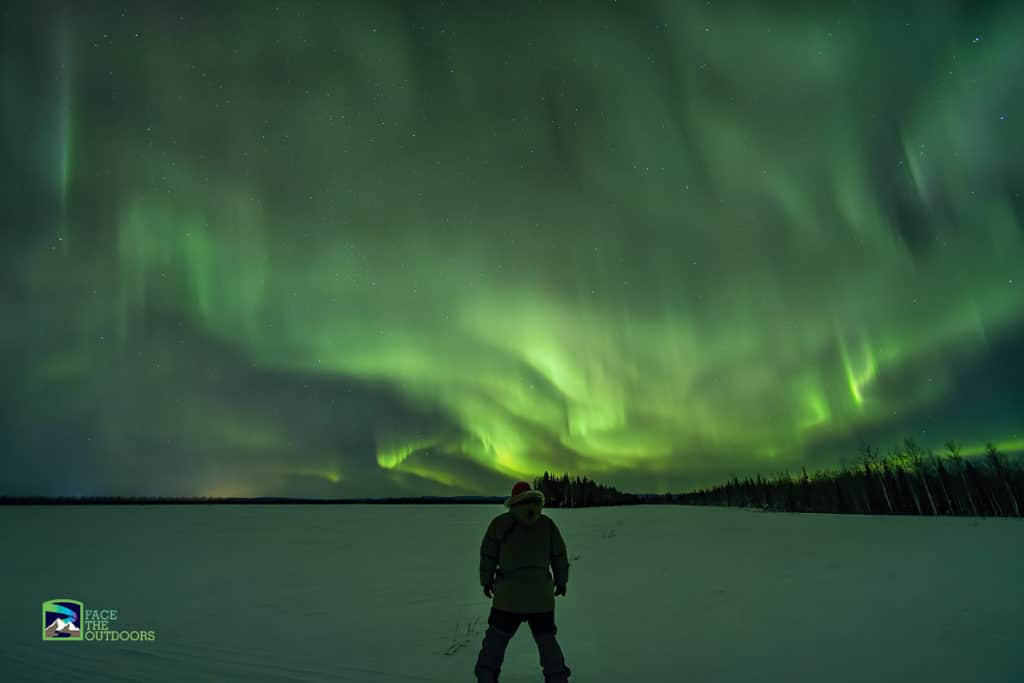
The aurora borealis, also known as the Northern Lights, is a natural light display in the Earth’s sky, predominantly seen in the high-latitude regions (around the Arctic and Antarctic). Alaska is one of the best places in the world to view the aurora borealis, as it is located at a high latitude and has clear, dark skies.
The best time to view the aurora in Alaska is during the winter months, when the nights are longest and the skies are darkest. January is a prime time to see the aurora borealis.
The lights are visible most nights, but they are most active during periods of increased solar activity, which can be predicted by monitoring solar weather forecasts.
One of the best solar forecasts is the Aurora Forecast by the Geophysical Institute, which is broadcasted from the University of Alaska, Fairbanks.
There are several ways to view the aurora in Alaska. One option is to head out into the wilderness, away from city lights, and look up at the sky. This can be a magical experience, especially if you are in a remote location with no other distractions.
For those who travel to Alaska in January, you can easily view the Aurora from Anchorage.
Another option is to join a guided tour, which can provide transportation to prime viewing locations and offer educational information about the aurora and the science behind it. Many tour operators also offer amenities such as warm blankets, hot drinks, and snacks to make the viewing experience more comfortable.
It is important to dress warm for an aurora viewing trip, as temperatures in Alaska can drop below freezing in the winter. It is also a good idea to bring a tripod or other stable surface for your camera, as the lights can be faint and difficult to capture without a long exposure.
The lights are often visible from Fairbanks, Denali National Park, and other areas in the Interior. You can also view them from Southcentral Alaska, but the light pollution from Anchorage can affect how well you can see them. Travel outside of the big city to catch the best views.
Overall, viewing the aurora borealis in Alaska can be a once-in-a-lifetime experience, and one that is not to be missed. Just be sure to plan ahead and prepare for the cold weather and dark skies. Especially exciting is seeing the aurora borealis inside the Arctic Circle!
Land Arctic Circle Aurora Borealis Tours with Northern Alaska Tour Company starts at $319 per person, and Flight Arctic Circle Aurora Borealis Tours start at $659 per person.
Northern Alaska Tour Company
- Address: 3820 University Ave S Fairbanks AK 99709
- Phone: (800) 474-1986
- Email: [email protected]
- Website: northernalaska.com
- Social Media: Facebook | TripAdvisor
Backcountry Ice Skating In Alaska
Backcountry ice skating in Alaska can be a thrilling and unique outdoor activity. It involves skating on natural bodies of frozen water, such as lakes or rivers, in the wilderness and wild landscapes of Alaska. This type of skating can be a great way to explore the beauty of the Alaskan wilderness, as well as to get some exercise and fresh air.
Check out this video of Utkan Kocaturk ice skating on Wasilla Lake
There are a few things to consider before embarking on a backcountry ice skating adventure in Alaska. First and foremost, it is important to ensure that the ice is thick enough to support your weight. This can be difficult to determine, especially if the ice is not clear, so it is always a good idea to check with local authorities or experienced ice skaters before venturing out.
It is also a good idea to bring a pair of ice picks or other tools that can help you get out of the water in case you fall through the ice.
In addition to being prepared for the potential hazards of ice skating in the backcountry, it is also important to dress appropriately for the weather. Alaska can be very cold in the winter, and it is important to wear layers of warm clothing to protect against the elements. You should also bring along a pair of gloves and a hat to keep your hands and head warm.
Overall, backcountry ice skating in Alaska can be a fun and exciting way to experience the beauty of the Alaskan wilderness. Just be sure to take the necessary precautions and be prepared for the unique challenges of skating in the backcountry.
Try Your Hand At Ice Fishing
If you enjoy fishing, you can try your hand at ice fishing in Alaska in January. Many lakes and rivers in the state freeze over in the winter, creating opportunities for ice fishing. You can hire a guide or rent equipment to get started. There are a few things you will want to keep in mind if you are planning on going ice fishing in Alaska.
Make sure you dress warm. It can get very cold in Alaska during the winter, so make sure to dress in layers and wear warm, insulated clothing.
Do not forget to bring the right equipment. In addition to your fishing gear, you will need a spud bar (a long, heavy metal rod used to test the thickness of the ice) and an ice auger (a hand-powered or gas-powered drill used to make holes in the ice). You may also want to bring a sled or a small all-terrain vehicle (ATV) to transport your gear.
Ensure that you know the regulations. Different areas in Alaska have different fishing regulations, so make sure to check with the local authorities or fish and game department to find out what you can and can’t do.
And always stay safe! Ice fishing can be a fun and safe activity as long as you take the necessary precautions. Make sure to stay on marked trails and paths, and avoid going out onto the ice alone. It is also a good idea to carry a set of ice picks or a rescue sled in case you fall through the ice.
Snowshoeing
Snowshoeing is a popular winter activity in Alaska, as it allows you to explore the snowy wilderness and take in the stunning beauty of the landscape.
Whether you are a beginner or an experienced snowshoer, there is no shortage of beautiful trails and breathtaking views to explore in Alaska. To get started with snowshoeing in Alaska, you will need a few key pieces of equipment.
First, you will need a pair of snowshoes. These are large, flat frames that you attach to your boots to distribute your weight over a larger area, allowing you to walk more easily on deep snow. Snowshoes come in different sizes and styles, so be sure to choose a pair that is appropriate for your weight and the type of terrain you will be traversing.
Next, you will need warm, waterproof clothing and a good pair of gloves and hats to keep you warm and dry. It’s also a good idea to bring along snacks and water, as well as a map and compass (or a GPS device) to help you navigate.
When snowshoeing in Alaska, it’s important to be prepared for the cold and to dress in layers. This will allow you to easily adjust your clothing as your body temperature changes during the day. It is also a good idea to bring along a first aid kit, just in case.
Many first time snowshoers like to go with a group or a guide. This will not only provide you with added safety, but it will also give you the opportunity to learn more about the area and the local flora and fauna.
There are many guided snowshoeing tours available in Alaska, so you can choose a tour that fits your interests and ability level.
Alaska Nature Guides Snowshoe Tour
- Address: PO Box 170 Talkeetna AK 99676
- Phone: (907) 733-1237
- Email: [email protected]
- Website: alaskanatureguides.com
- Social Media: Facebook | Instagram | TripAdvisor
Soaking In Hot Springs
Hot springs in Alaska can be a relaxing and rejuvenating experience, especially during the colder months when the air is crisp and the snow is deep. Many of these hot springs are located in remote areas, providing a sense of seclusion and immersion in the natural surroundings.
There are a few different types of hot springs in Alaska, each with its own unique characteristics. Some hot springs are geothermal, meaning that they are heated by molten rock deep beneath the earth’s surface. These hot springs tend to have a constant temperature and are often located near active volcanoes.
Other hot springs are fed by underground aquifers and may fluctuate in temperature based on the surrounding climate and geology.
Regardless of the type of hot spring, it’s important to be aware of any potential hazards before soaking. Some hot springs may have high levels of minerals or bacteria, so it is always a good idea to check with local authorities or park rangers before soaking. It is also important to be mindful of your surroundings and to respect any posted rules or regulations.
If you are planning a trip to soak in hot springs in Alaska, here are a few things to consider:
- Pack appropriate clothing: Hot springs in Alaska can be quite chilly, especially if you are soaking outside. Be sure to bring warm, waterproof clothing and shoes to stay comfortable.
- Follow Leave No Trace principles: When visiting hot springs in Alaska, it is important to leave the area as you found it. Pack out all of your trash, respect any posted rules or regulations, and minimize your impact on the environment.
- Plan ahead: Many hot springs in Alaska are located in remote areas, so it is important to plan ahead and be prepared. Bring enough food and supplies for your trip, and make sure you have a reliable means of communication in case of an emergency.
- Respect the local community: If you are visiting hot springs on public land, be sure to respect the rights of any local residents or traditional users. Follow any posted rules or regulations, and be mindful of your impact on the area.
Soaking in hot springs in Alaska can be a truly magical experience. Just be sure to plan ahead, follow safety guidelines, and respect the local community and environment, especially if you are doing this in January when it’s usually below freezing and in sub-zero temperatures.
Regardless of what you choose to do, it is important to be prepared for the cold weather in Alaska in January. This means dressing in layers, wearing warm boots and gloves, and bringing along extra warm clothing in case of unexpected weather changes.
Things To Do In Alaska In Winter Months
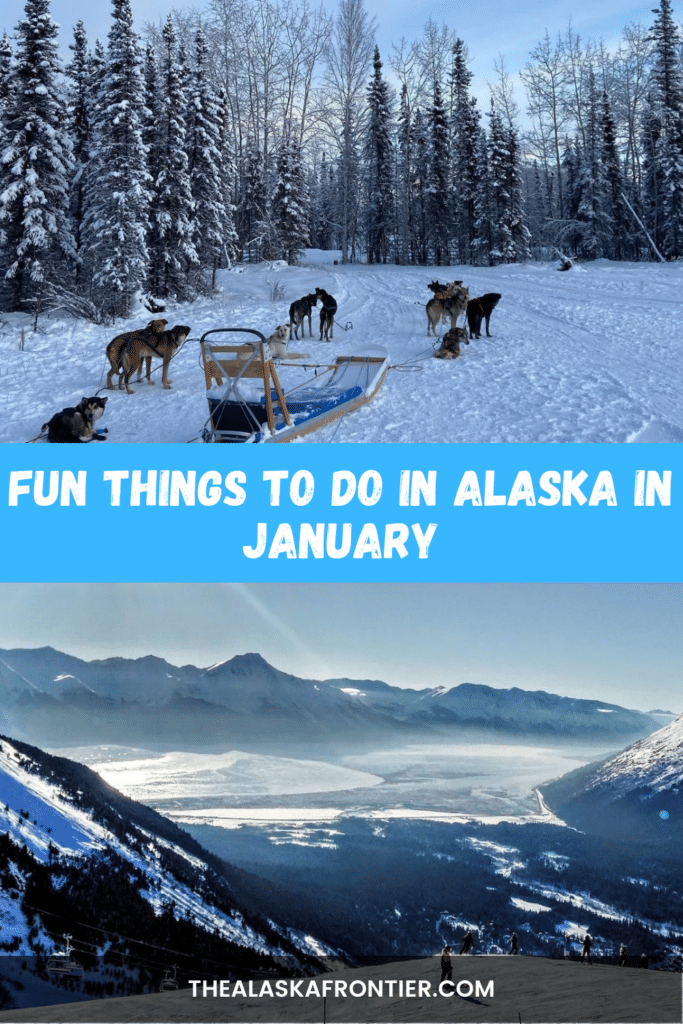
After living over 14 years in Alaska, Megan McDonald can confidently state that there’s not much of the state on the road system that she hasn’t visited. From the Brooks Range to McCarthy, Homer, and everywhere in between, every nook and cranny of Alaska is always her new favorite place.
As President and co-founder of Alaska-based boutique media agency HuMu Media, she spends her work time writing, photographing, and traveling, and her off time writing, photographing, and traveling. They say do what you love, and she is lucky enough to do so!
You can follow her travels on Instagram at @theitinerantginger

